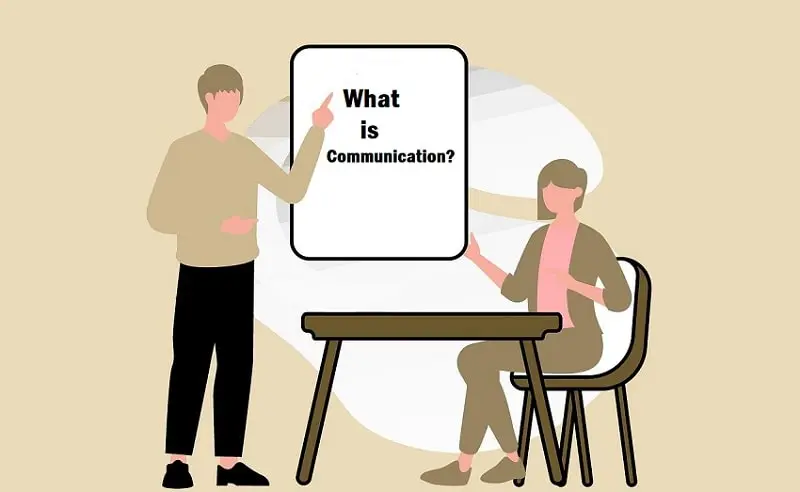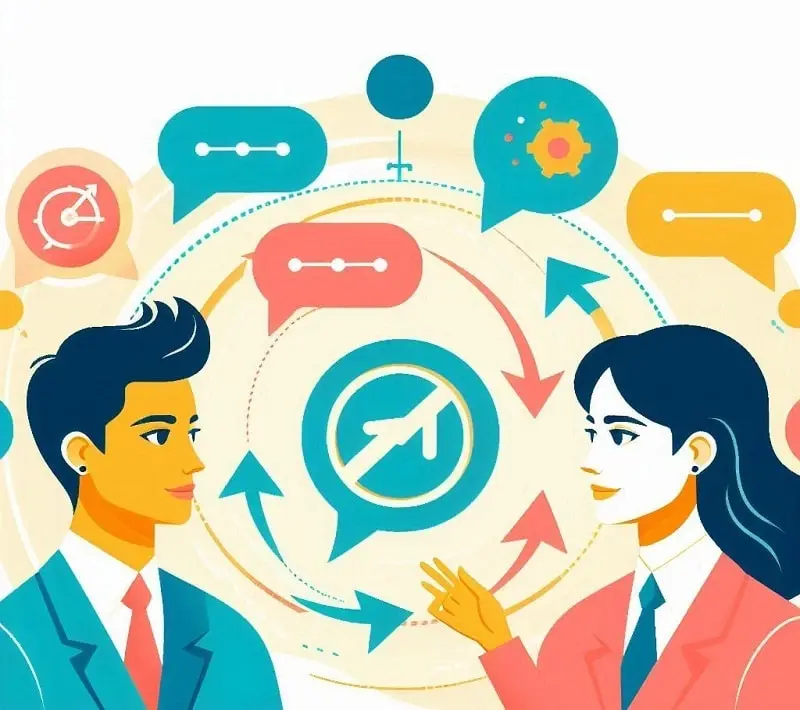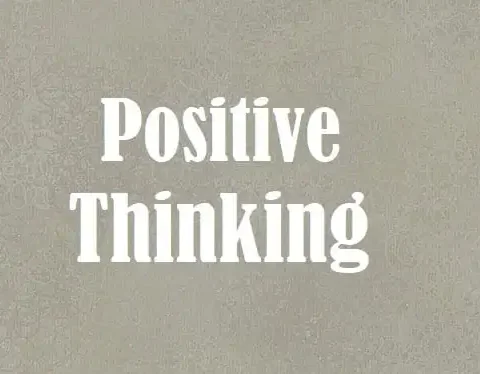All creatures on the planet have ways of communicating feelings and ideas to one another. Unlike animals, humans are able to convey precise meanings through language and words. Communication is the foundation of human contact and essential to our daily lives. It’s the process by which we communicate our ideas, feelings, and thoughts to others and, conversely, learn about theirs. This post explores definition of communication, what is its meaning including types, and right way to communicate.

Communication-Meaning and Definitions
Origin word Communication– derived from the Latin word “communis” or “communicare” ” which means, to participate’, “to share” or “to make common
Meaning of Communication
- The Oxford dictionary defines communication as “the activity or process of expressing ideas and feelings or of giving people information”.
- The Cambridge dictionary describes communication as “the act of communicating with people and sometimes includes the message itself.”
More:
Communication Definitions of Communication by Various Scholars
- Harold Lasswell: “Communication is the transmission of information, ideas, or attitudes from one person or group to another.”
- Carl Hovland: “The process by which an individual (the communicator) transmits stimuli (usually verbal symbols) to modify the behavior of other individuals (the communicators).”
- Berlo: “Communication is the process of establishing a commonness or sharing of information, ideas, or attitudes between individuals or groups.”
- Gudykunst and Ting-Toomey: “The process of creating and negotiating meaning through verbal and nonverbal messages.”
- James Carey defined (in his1992 book “Communication as Culture communication): “A symbolic process whereby reality is produced, maintained, repaired and transformed”
- Murphy, H., Hildebrandt, H. and Thomas, J.: “A process of transmitting and receiving verbal and non-verbal messages. It is considered effective when it achieves the desired response or reaction from the receiver.
- Theo Haimann: “Communication means the process of passing information and understanding from one person to another. Communication, fundamental and vital to all managerial functions, is the process of imparting ideas and making oneself understood by others. “
- Judy C. Pearson and Paul E. Nelson: “The process of understanding and sharing meaning.”
- Beebe and Masterson: “The process of creating and sharing meaning through verbal and nonverbal messages.”
- William Scott : In administrative context, it is defined as, “a process which involves the transmission and accurate replication of ideas ensured by feedback for the purpose of eliciting actions which will accomplish organisational goals. “
Types of Communications

There are several ways that communication might appear, and each has a distinct purposes and contexts. There are 4 main types of communication: verbal, nonverbal, written, and visual. However there are also other medium of communications like intrapersonal, interpersonal, mass and digital. Let us have a quick look on each type of communications.
Main Four Communication Types
- Verbal Communication: Communication that occurs through spoken word. Examples- Calls, video conferencing, face-to-face conversation, calls, podcast, presentations, lectures, and meetings.
- Nonverbal Communication: Refers to any form of communication that is not done through spoken word. Examples- Body language, eye contact, facial expressions, tone of voice, gestures, posture, touch.
- Written Communication: Involves the use of words, sentences, and paragraph. It can range from informal texts to formal reports. Example: Emails, letters, academic writing, social media posts, books and ebooks, reports and documents.
- Visual Communication: In this mode of communication the transfer of information is done in a format that can be read or viewed like images, videos, graphs, infographics, charts.
Other Medium of Communications
- Intrapersonal Communication: Dialog that occurs within oneself, often reflecting on thoughts and feelings. Example- Goal setting, mindfulness, meditation, daydreaming.
- Interpersonal Communication: Refers to conversation between two or more people. Example-Group discussions, active listening:, conflict resolution.
- Mass Communication: Refers to communication that is done through mediums like Television, radio, newspapers, or the internet.
- Digital Communication: It refers to the flow of information through digital platforms such as social media and email.
You can check various types of communications in details Here (External Link)
The Right Way to Communicate
- Prevent misunderstandings, be precise and to the point.p
- Pay attention to the speaker, demonstrating understandings and interest.
- Recognize and honor other people’s feelings and viewpoints.
- Use feedback to confirm understanding.
- Be ready to modify your communication approach to fit various situations and audiences.
- Select the most suitable medium to communicate.
- Encourage dialogue.
- Be aware of body language and tone.
- Listen actively.
- Be respectful.
Video: What is Communication? Definition, Process, Types and 7 C’s of Communication
Conclusion:
By understanding various modes of communication and following the appropriate technique to communicate, individuals may deliver their message clearly, develop solid relationships, and achieve their goals. By gaining proficiency in communication you can have more fulfilling relationships, better decision making ability, boost in morale, and success in many areas of life.
Need to learn more about communications? Check – Wikipedia.org/wiki/Communication (External Link)

